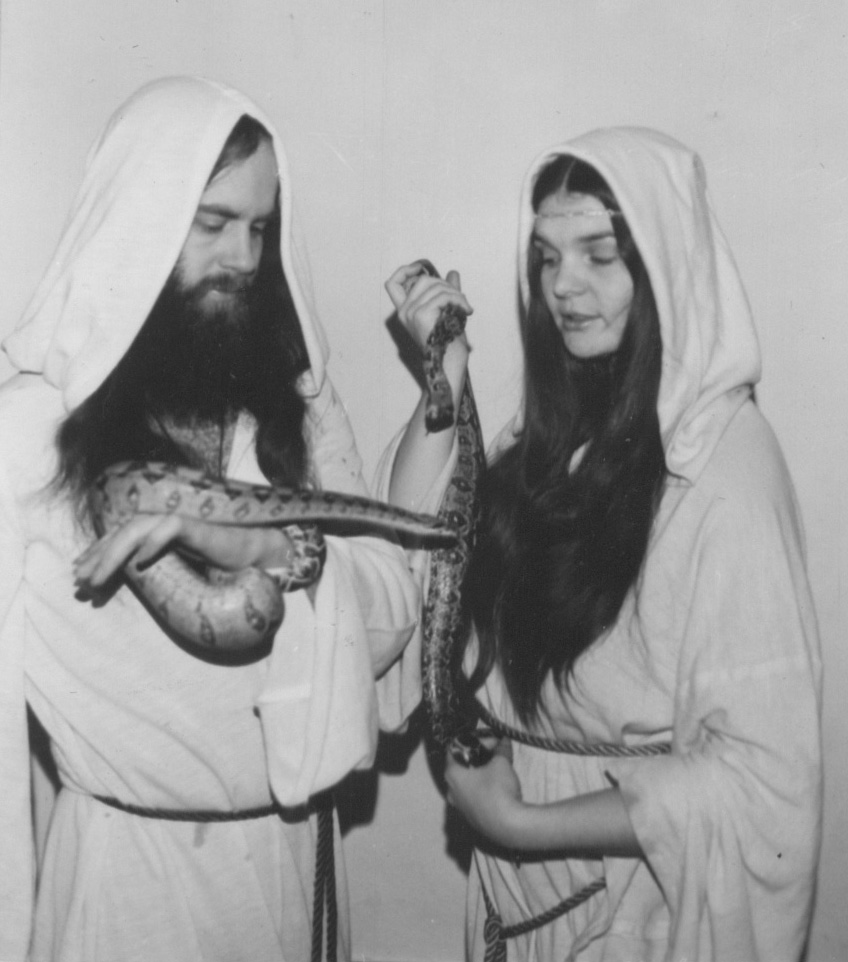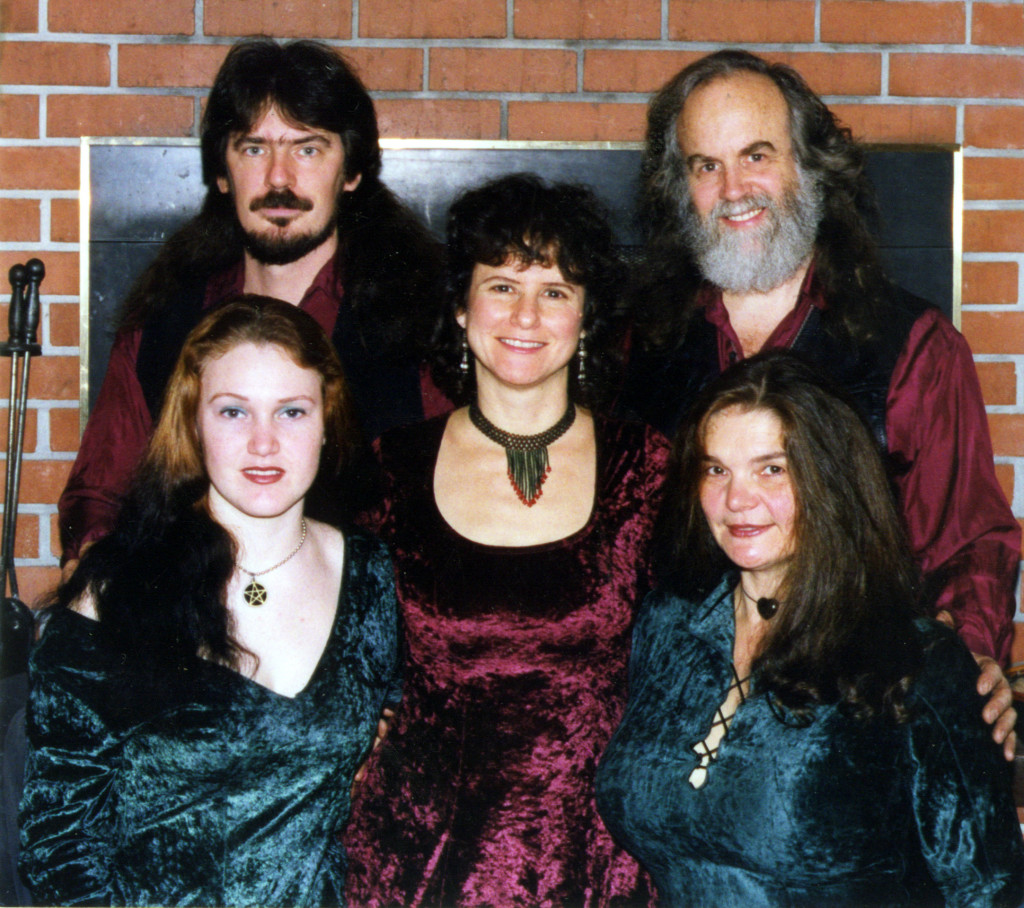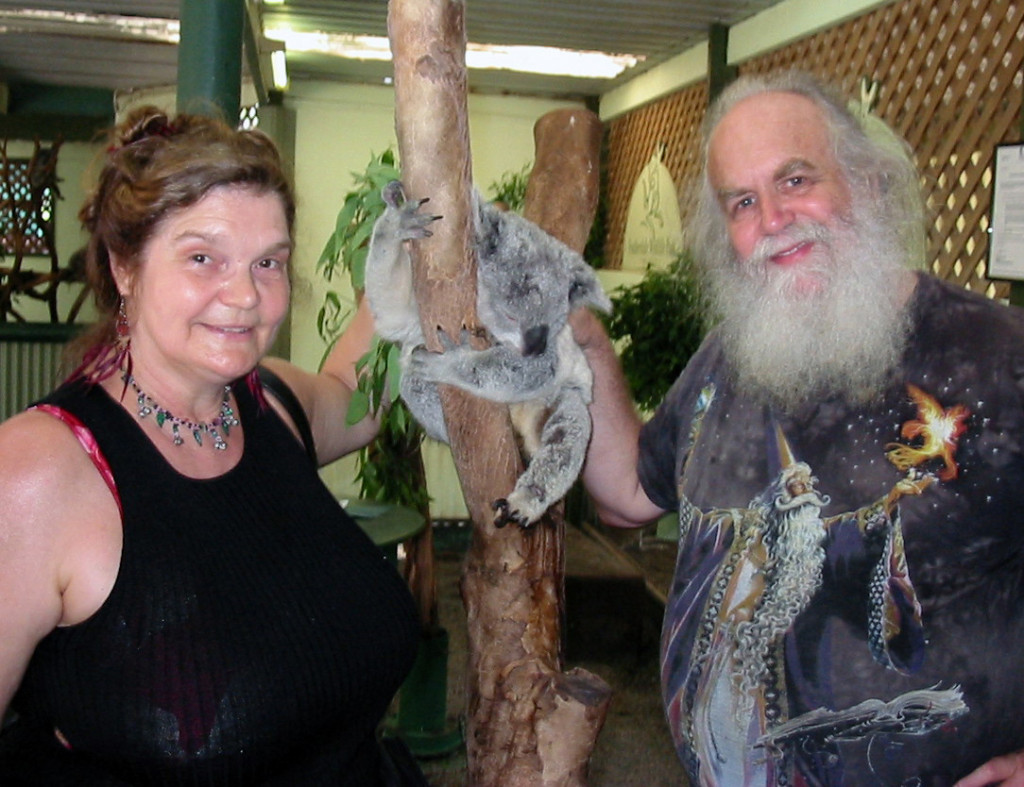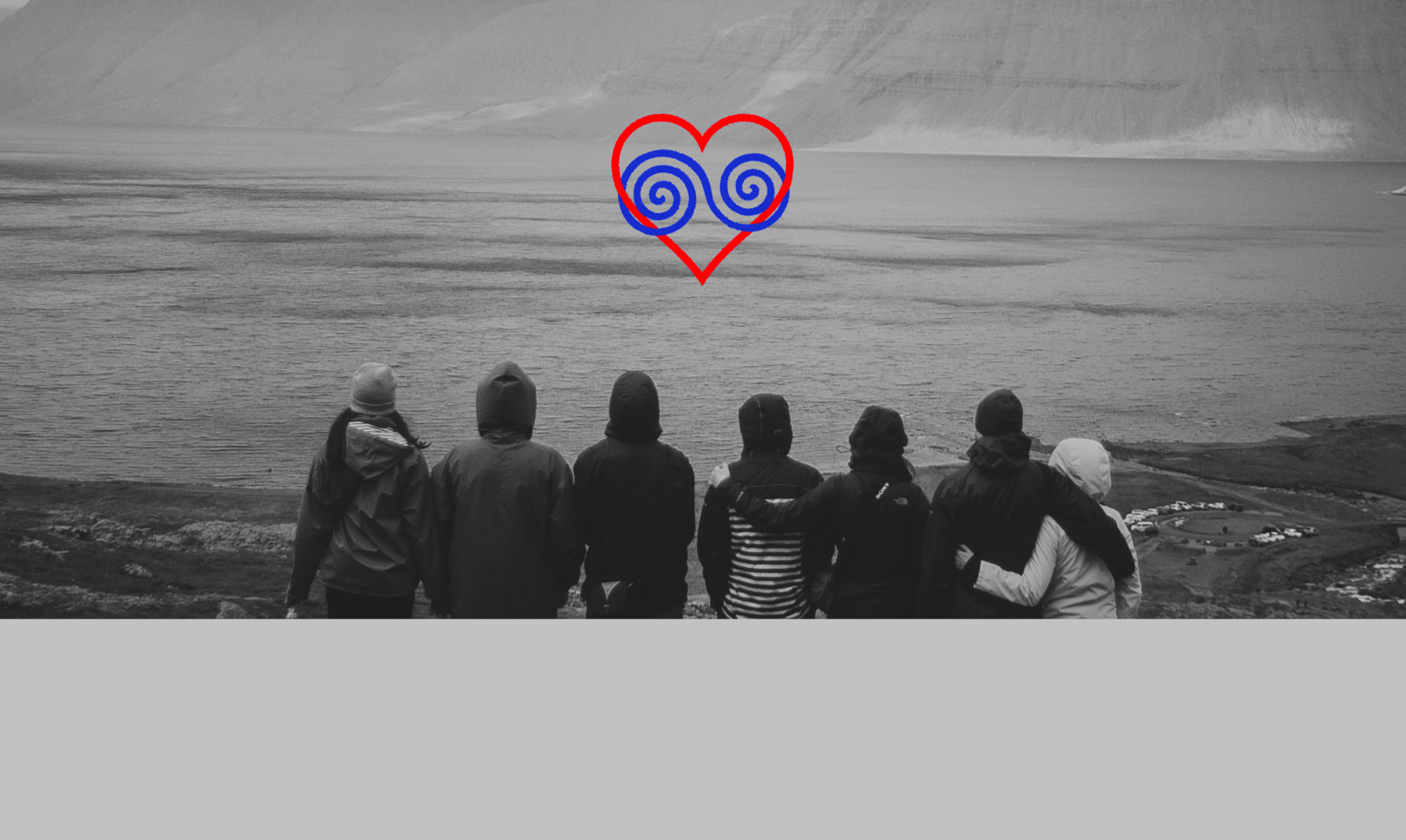The shoulders we stand upon – Part 3
The treasure trove of the Oligoamorists is teeming with heroes and monsters, idols, mythical figures and chimeras.
But the best stories are written by reality itself – or rather: it is reality that finds its expression in stories, absorbs impulses from them and finally weaves them into an incredibly colourful carpet.
I would like to dedicate this four-part series of articles to the history of Oligoamory, especially its fascinating roots and its most important value, self-awareness.
Double, double, toil and trouble – fire burn and cauldron bubble!*
In my last entry I wrote that another encounter of two remarkable people had to take place before the term and the conception of “Polyamory” could fully emerge.
One of these persons was the psychology student Timothy Zell [aka “Otter” and “Oberon”], who was strongly influenced in his education by the way of thinking of Abraham Maslow (who by the way was also a mentor of the “father of non-violent communication“, Marshall Rosenberg).
Maslow’s ideas were aimed at a holistic humanism through individuation, especially by means of perceiving and researching one’s own needs – a process he called “Self-Actualization”. During his studies Zell heard sentences like this:
“Self-realizing people, people who have reached a high degree of maturity, health and self-fulfillment, can teach us so much that they sometimes seem almost like another race of human beings. But because it is so new, exploring the most elevated areas of human nature and its ultimate possibilities and hopes is a difficult and tortuous task. For me, it has implicated a constant destruction of beloved axioms, the incessant confrontation with apparent paradoxes, contradictions and ambiguities, sometimes even the collapse of long established, firmly believed and apparently unassailable laws of psychology. Often it turned out that they were not laws but only rules for living in a state of mild and chronic psychopathology and anxiety, in a state of disability and crippledness and immaturity, which we do not notice because most of the others have the same affliction as we do.” ¹
And it was the following sentence in particular that left a powerful impression:
“Self-actualizers are ethical; they have social feeling; they have a wide perspective, a sense of wonder and a sense of the mysterious. But they are also alienated from ordinary conventions. They feel detached from the values of the [mainstream] culture. They are aliens in a foreign land.” ²
Because during the same time, Zell maintained a literary circle since 1961, which mainly dealt with fictional texts, and it was there that Robert Heinlein‘s book “Stranger in a Strange Land” literally struck like a bomb in 1962 (see Part 1 – Entry 47).
Maslow’s views on the development of individual potential combined with Heinlein’s visionary idea of an alternative, non-conformist model of society resulted in a fascinating prospect. But concerning most people, such a mental prospect would probably have remained a mere theory.
But Zell and his small group of motivated fellow campaigners were so inspired by it that they wanted to try to convert such a theoretical “what-if” into a viable practice – along the lines of the Chinese proverb “that it would be better to light a candle instead of just moaning about the prevailing darkness”. The students at that time probably also saw the danger that Maslow’s thoughts on an academic level would have (too) little impact on actual social developments of the time. A time that everywhere announced signs of a social awakening in many respects [Kennedy/Johnson era: Civil Rights Movement, Black Power, Nuclear Arms Race, Vietnam war, Hippie culture, Gay Pride, Women’s Liberation].
As a result, the organization “Church of All Worlds – CAW” was formed in 1962 – based on Zell’s reading circle, and in 1968 it even went public with its own thematic magazine, the alternative counter-cultural “Green Egg“.
One of the authors of the “Green Eggs”, Tom Williams, later described the conviction of the CAW as follows:
“Today we have the rare privilege to choose consciously the myths we wish to live by and to know that the world which is evoked is dependent on the mythic structure of a people and can literally be anything from the oil and bombers and pollution of the Pentagon and the Kremlin to the Magic Wood of Galadriel.” ³
In this remarkable sentence the “creation of the (personal) myth” is likewise indicated, which the communication teacher Brad Blanton also refers to in his “Radical Honesty” (which in turn emerged from “Non-violent communication”).
Zell and his companions had thus recognised that the “true magic of the present” lies in the philosophical reality of the interaction of “our being, which constitutes our consciousness” – as well as “our consciousness, which in turn constitutes our being”. Because translated as a result, this realisation means that our perceptions and expectations are always strongly influenced, even programmed, by the circumstances and events of our environment (our “reality”). But at the same time there exists also the remarkable other aspect, which is that the human mind is just as capable of influencing and modifying conditions and events (of our “reality”!) if it succeeds in performing a change of consciousness and attitude.
Since Zell and the participants of his “church” therefore wanted to emphasize that every developed human being is potentially capable of “creative” (and in this sense quasi “divine”) action in this way, the CAW was conceived in a neo-pagan spirit (see Part 2 – Entry 48) from the outset, which was also inspired by Heinlein’s novel (see Part 1 – Entry 47) – from which the name “Church Of All Worlds” was already borrowed, and as a further consequence the members honorarily greeted themselves with the wording “Thou Art God”.
Thus, in the following decades, the CAW, founded by Zell became a dazzling focal and projection point for the unfolding North American neo-pagan scene in all its expressions. The (science) fictional foundations of the early days were soon augmented by elements coming from Wicca, eclectic witchcraft, and the Goddess movement (see also Entry 48).

In this way Timothy Zell finally met in 1973 the other “remarkable person” I need for my story of Poly- and Oligoamory – and of course this meeting happened in the context of a gnostic-neopagan conference (“Gnosticon”), where Zell gave the opening speech. For it was there that Zell fell in love with the witch Morning Glory Ferns (self-chosen (plant)names are not unusual for witches), who was present among the visitors. And this incident triggered a chain of events that would eventually make it necessary to cleverly combine spiritual theory with the practical aspects of everyday life.
Our two protagonists faced a state of affairs – up to their own private lives – that until now usually looked like that:
Both modern witchcraft and the “Church of All Worlds” were organized into small independent groups – in witchcraft as “coven” (see Part 2 – Entry 48), in the CAW as “Nests” as proposed by Heinlein. And in both group types, women and men worked intensively esoterically, spiritually and psychologically on their individual and collective unfolding, whether magically or for the purpose of personality development.
Probably everyone of us will now remember a small team-building group, workshop, seminar, whatever: The necessary degree of a kind of “soul-striptease” in such small groups can be quite considerable – which may lead in turn to a substantial amount of trust and intimacy among the participants. In the ideal case, this even results in the precise implementation of what the psychologist Scott Peck described as the steps towards “community building” (see Entry 8). And it was also Scott Peck who pointed out a likely amount of sexual energy building up in this regard. Against the background of the “Wild 60s” – but even more so against the background of the extremely counterculturally liberal “Coven” and “Nests”, it happened from time to time that participants occasionally indulged in this energy. And in addition to this it happened that participants fell in love with each other because of the already increased intimacy – and on top of that there was even the perspective for a continuing relationship because of the joined (and ongoing) Coven/Nest-activity. Coven or Nests, however, were attended by people who elsewhere in their lives were in other intimate relationships, e.g. with life partners or spouses – people who were not part of the coven or the same nest. Out of which a moral dilemma began to emerge, which was initially attempted to counteract with the already existing concept of “open relationship” or “open marriage”.
Nevertheless, another problem soon arose: Following the concept of “open relationships”, the new (loving) connections could often only be lived and experienced as a phenomenon of the corresponding micro-group ( similar to: “What happens in the Coven/Nest stays in the Coven/Nest” ). In practice, however, feelings couldn’t be restricted to certain areas of life, nor did this approach harmonise with a concept of holistic “self-realization” (according to Maslow, who had postulated an all-encompassing approach in this respect). E.g. Morning Glory herself had to experience how the “open marriage” with her then husband broke up in the end when she took up the relationship with Timothy Zell.
As active members of a countercultural scene who were otherwise intensively (and in parts even politically) engaged in values such as entitlement, honesty, self-empowerment, inclusiveness and tolerance, this discrepancy between ideal and reality will probably have been particularly difficult to accept. But following Maslow, who wrote “that self-actualizers are solution-oriented people”, Zell and Morning Glory spent the next 10 years developing (and living!) a model for themselves and their personal surroundings that was more coherent with the goals of consistent self-development and “creative inner divinity”.

From their own experiences in a threesome and eventually even a six-sided relationship (the so-called “Ravenheart family”), a way of living and loving together finally emerged, which Morning Glory first outlined in writing in May 1990 in the “Green Egg-Magazine”. This text, in which the word “polyamorous” was used for the first time worldwide in a context of ethical multiple relationships, can be found HERE.
It already contains all the guiding basic values that are still crucial for all ethical multiple relationships today: dedication, commitment, honesty, responsibility and transparency.
[And why of all things was the descriptive term “polyamorous”? There are several sources regarding this question, e.g. here and there. Morning Glory once said in an interview »When Oberon and I wanted to coin words, we usually looked at Greek and Latin roots. However, the Latin term for “loving many” would be “multi-amory,” which sounded awkward; and the Greek would be “polyphilia”, which sounds like a disease. So I chose “poly-amorous”– and the rest is history.«]
And the rest is indeed history.
Polyamory became the breakthrough for the overdue liberation and justification of a world of (loving) relationships and experiences, which many people already considered themselves to be in one way or another – and in parts already attempted to bring to life in various subcultures. Morning Glory’s “Polyamory” thus followed the path that the Queer– and LGBT movement had already begun to pave just a few years earlier in terms of liberation and entitlement regarding sexual and gender preferences.
Over the next 25 years, however, this succession would regularly raise the problem of how extensively the “relationship-mode” was dependent on sexually connoted parameters – with the result that the philosophy of Polyamory is continually in danger of being claimed as a characterizing feature of merely promiscuous or predominantly sex-positive clientele.
(My) Conclusion:
The huge success of Morning Glory and Oberon Zell, to combine a creative self-realizing philosophy with a community-building way of life by the conscious constellation of loving companions as “family-of-choice”, was groundbreaking in many ways.
- First and foremost for the neo-pagan community – whether purely mystical/esoteric or political (e.g. Faerie, Dianic Wicca, Reclaiming etc.). The Zell Ravenhearts, with their holistic approach of living and loving and the group-psychological insights gained from this, have made a significant contribution to the understanding of spiritual self-development in intimately joined togetherness. Since the turn of the millennium, guidebooks such as “Wicca Covens: How to start and organize your own” by Judy Harrow (Citadel 2000) have appeared in this way, which can be read like the 1×1 of integrative community building within a witches’ coven.
- In any case socio-politically, since the first ever formulation of an ethical concept regarding multiple-relationship management has created public perception concerning this way of life at all. This perception had – similar to the Queer/LGBT area – a beneficial two-sided effect: On the one hand by manifesting in the public consciousness that there were (and are) people with these desires and needs – which on the other hand makes it easier for people who think about the possibility of multiple relationships to acknowledge these thoughts, to network with like-minded people and to dare to put this way of life into practice. [About the political dimension of Polyamory see Part 4!]
- And of course – last but not least – in the private lives of many tens of thousands of people who are globally striving to follow in the footsteps of Oberon Zell and Morning Glory. People who daily walk the “path of greatest courage” in their multiple relationships, who face their fears and jealousies, who constantly strive to improve themselves – in order to finally participate in the most fantastic experience of all: To get to know oneself as an individual, to realize one’s true self, and to experience how we can use our collective creative potential – in its magical synthesis as a potentiated sum of its parts – to create added value for the good of all that surrounds us and that which is within us.

* Quote from William Shakespeare, “Macbeth“, Song of the Three Witches, Act IV, Scene 1
¹ A. H. Maslow (Ed: Richard Lowry), “Dominance, Self-Esteem, Self-Actualization: Germinal Papers”, Monterey, CA: Brooks/Cole, 1973
² A. H. Maslow, “Motivation and Personality”, 2nd Edition, New York: Harper & Row, 1970
³ Green Egg, Volume VIII, 1975
Thanks to Atman Wiska for the German translation, contextualization and uploading of the “Bouquet of Lovers” by Morning Glory Zell-Ravenheart.
Thanks posthumously to Margot Adler and her book “Drawing Down The Moon – Witches Druids, Goddess-Worshippers and other Pagans in America”, completely revised and updated edition 2006, Penguin Books
And a thousand thanks to Oberon Zell-Ravenheart for the friendly and very personal contribution of the beautiful private photos. (Copyright: Oberon Zell and CAW.org)

